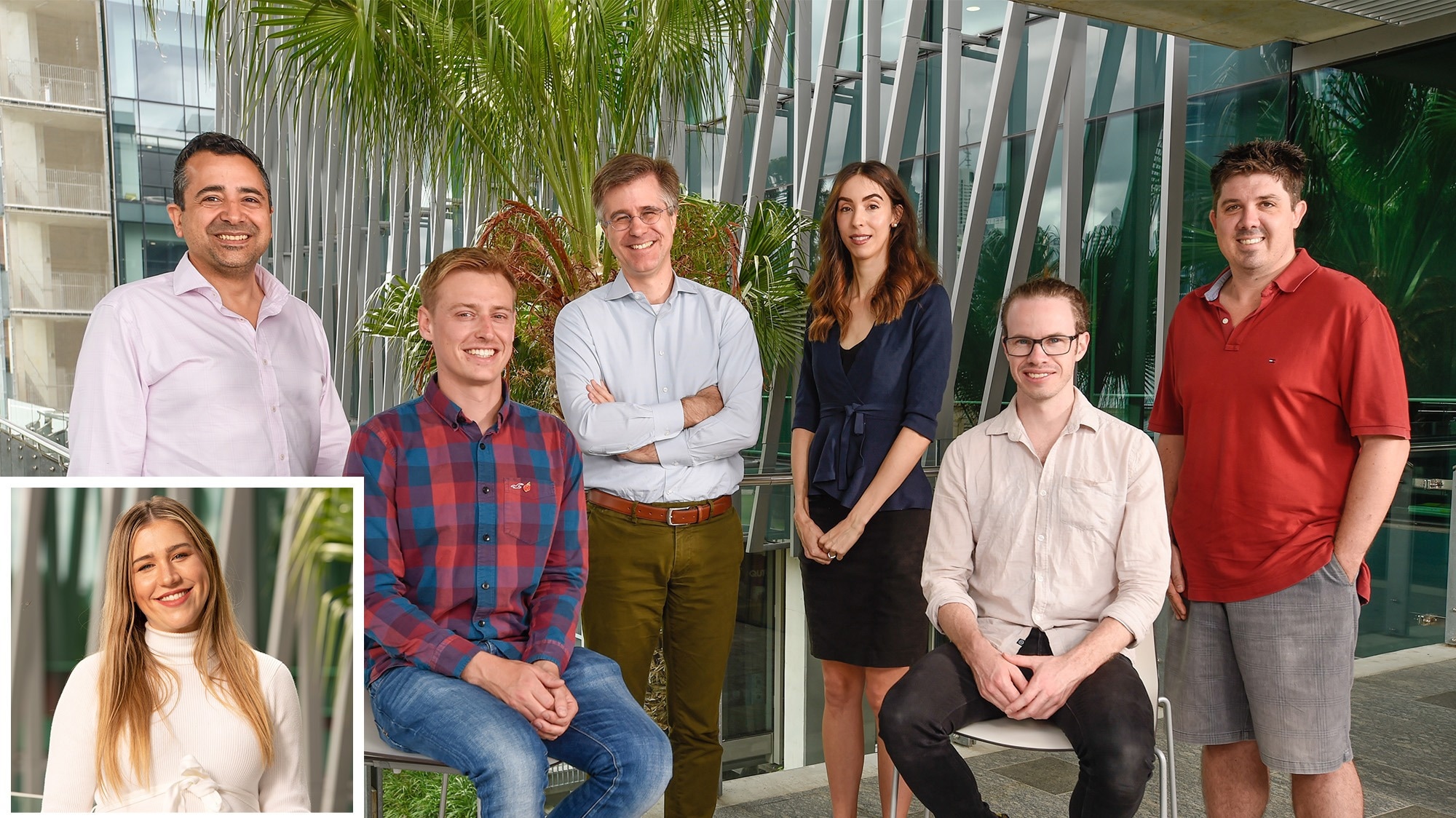Reviewed by Aimee MolineuxNov 21 2022
A transdisciplinary team of QUT researchers has proposed an innovative strategy to address the global plastic pollution crisis using a combination of plastics encoded like DNA, and international law.
 QUT researchers: Dr Hope Johnson inset. From left: Professor Afshin Akhtar-Khavari, Dr Joshua Holloway, Distinguished Professor Christopher Barner-Kowollik, Annastasia Bousgas, Lewis Chambers, and Associate Professor James Blinco. Image Credit: Queensland University of Technology
QUT researchers: Dr Hope Johnson inset. From left: Professor Afshin Akhtar-Khavari, Dr Joshua Holloway, Distinguished Professor Christopher Barner-Kowollik, Annastasia Bousgas, Lewis Chambers, and Associate Professor James Blinco. Image Credit: Queensland University of Technology
Environmental issues like plastic pollution have been compared to other global problems like climate change for their magnitude and complexity.
The QUT research team’s multifaceted strategy was published in Polymer Chemistry by members of both the law and chemistry departments.
The researchers are ARC Laureate Fellow Professor Christopher Barner-Kowollik, Associate Professor James Blinco, Professor Hope Johnson, Professor Lewis Chambers, Professor Joshua Holloway, Professor Annastasia Bousgas, Professor Afshin Akhtar-Khavari, and Professor Afshin Akhtar-Khavari from QUT’s Centre for Materials Science and Centre for a Waste Free World.
Finding the source of the polluting plastic, according to Professor Barner-Kowollik, is one of the biggest obstacles to solving the problem of plastic pollution.
Tracing plastic resolves the anonymity of plastic waste. If a technology existed that allowed to give unique ‘DNA’ to each batch of plastic that was produced, plastic waste could be traced back to the producer, given the information stored in the ‘DNA’ could be simply read-out.
Christopher Barner-Kowollik, Distinguished Professor, Queensland University of Technology
Numerous new developments in polymer chemistry, according to Professor Barner-Kowollik, could contribute to the identification of plastic.
Sequence-defined polymers, which could be decoded similarly to DNA, could be used to label batches of plastic production chemically. However, it is currently difficult to read information from sequence-defined polymers.
The ability to read data from these sequence-defined polymers embedded in plastics is now possible thanks to new, simple, and direct technologies.
The challenge of enforcing responsibility remains if polymer science can create a system for uniquely identifying plastics and tracking each piece back to its manufacturer. This is where the legal researchers around Dr. Hope Johnson come in.
One of the first challenges with an international problem such as this is the obvious one of jurisdiction, and also where in the regulatory process we can best intervene to create sustainable change.
Afshin Akhtar-Khavari, Professor, Faculty of Business and Law, School of Law, Queensland University of Technology
“A considerable challenge is the implementation in international frameworks so that malicious actors cannot identify loopholes. A careful and coordinated international approach is of the essence, yet establishing it will require initial careful research into the underpinning international governance principles and subsequent coordinated approaches for implementation,” Akhtar-Khavari added.
The researchers refer to their study as a “discussion starter,” not only on the viability of using sequence-defined polymers for coding and reading “DNA” embedded in plastics and the related governance challenges but also for a more general discussion.
Barner-Kowollik added, “Research is done with focus, but sometimes there needs to be a broader lens. There is a critical need for the social and natural sciences to work more closely together in the future, breaking currently still prevailing siloed structures.”
The combined strategy of polymer science and international law focuses on the single result of holding polluters accountable.
According to the study, finding those in charge of plastic pollution could result in a phase-out of plastics.
Journal Reference:
Johnson, H., et al. (2022) Using precision polymer chemistry for plastics traceability and governance. Polymer Chemistry. doi:10.1039/D2PY01180H.